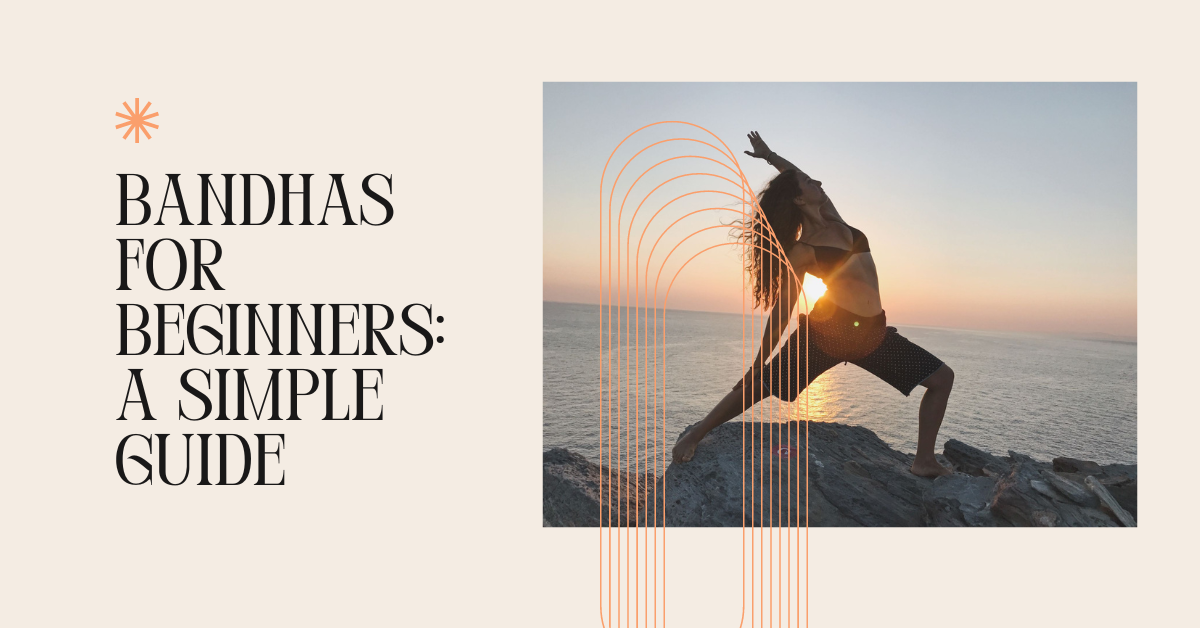Dear seeker, have you ever wondered what those mystical-sounding terms like “Mula Bandha” or “Uddiyana Bandha” mean in the world of yoga? Or perhaps you’ve heard your yoga teacher mention them in class, and you’re curious to learn more. Well, you’re in the right place! In this beginner-friendly guide, we will dive into the fascinating world of bandhas, those powerful yet subtle energy locks that can transform your yoga practice and take your mind-body connection to a whole new level.
Now, before you start picturing yourself as a human padlock (oh, the humor!), let’s get something straight: bandhas are not about physically locking anything. Instead, they are about directing and refining the flow of energy within your body. So, put aside any preconceived notions, and join us as we explore the basics of bandhas, learn beginner-friendly techniques for each, and discover how to overcome common challenges that newcomers might face. Trust us, your yoga journey is about to get a whole lot more exciting and profound!
Embrace subtle locks,
Bandhas guide our energy,
Transform, flow, unite.
Beginner-Friendly Techniques for Exploring Each Bandha
As we embark on this exploration of bandhas, it’s essential to remember that these techniques are subtle and require patience, practice, and awareness. So, let’s approach each of them with an open heart, a light-hearted attitude, and a genuine curiosity. Below are simple techniques to help you experience and understand the three main bandhas: Mula Bandha, Uddiyana Bandha, and Jalandhara Bandha.
Mula Bandha: Root Lock for Stability and Grounding
- Find a comfortable seated position with a straight spine, such as Sukhasana (Easy Pose) or Padmasana (Lotus Pose).
- Take a few deep breaths to center yourself and relax your body.
- As you exhale, gently engage the muscles at the base of your pelvic floor (the perineum in men and the cervix in women). It’s similar to the sensation of stopping the flow of urine.
- Hold this engagement for a few breaths, then release as you exhale.
- Repeat this process a few times, gradually increasing the duration of the engagement and maintaining a steady, relaxed breath.
Uddiyana Bandha: Abdominal Lock for Core Strength and Digestive Health
- Stand with your feet hip-width apart, knees slightly bent, and hands resting on your thighs.
- Inhale deeply, expanding your chest and ribcage.
- Exhale forcefully through your mouth, emptying your lungs completely.
- Without inhaling, draw your abdomen in and up, creating a hollow sensation in your belly.
- Hold this engagement for as long as you can comfortably hold your breath, then release and inhale gently.
- Repeat this process a few times, always ensuring you’re not straining or holding your breath too long.
Jalandhara Bandha: Throat Lock for Balancing Energy and Enhancing Focus
- Sit in a comfortable seated position with a straight spine.
- Inhale deeply, filling your lungs completely.
- Hold your breath and gently drop your chin towards your chest, creating a slight constriction in your throat.
- Keep your spine straight and avoid rounding your shoulders or upper back.
- Hold this position for a few seconds, then lift your chin and exhale slowly.
- Repeat this process a few times, gradually increasing the duration of the breath hold.
Remember, dear yogi, these techniques are meant to be practiced with patience and mindfulness. It’s crucial to listen to your body and avoid pushing yourself too hard or forcing the engagement. As you become more familiar with these subtle energy locks, you’ll start to experience their transformative effects on your yoga practice and overall well-being.
Common Challenges for Newcomers and How to Overcome Them
As you begin your journey into the world of bandhas, it’s quite normal to encounter a few hurdles along the way. Don’t worry, you’re not alone! Let’s take a look at some common challenges and how to navigate them with grace and a touch of humor.
Challenge 1: Difficulty Identifying and Engaging the Muscles
It’s not uncommon for newcomers to struggle with locating and engaging the right muscles when first practicing bandhas. Patience and practice are key here.
Solution: Break down the process by focusing on individual muscle groups and using visualization techniques. For example, imagine lifting a marble with your pelvic floor muscles for Mula Bandha or drawing your navel towards your spine for Uddiyana Bandha. And remember, it’s always okay to ask your yoga teacher for guidance or clarification.
Challenge 2: Holding the Breath or Creating Tension
In the beginning, it’s easy to inadvertently hold your breath or create tension in the body while engaging the bandhas.
Solution: Develop a habit of checking in with your breath and body throughout your practice. Are you breathing smoothly and steadily? Are your face, jaw, or shoulders relaxed? If you notice any tension or irregularity in your breath, pause, release the bandha, and reset before trying again.
Challenge 3: Expecting Immediate Results
We live in a fast-paced world where instant gratification has become the norm, but the practice of yoga, including bandhas, is a lifelong journey.
Solution: Embrace the process and cultivate patience. Focus on the present moment and celebrate small improvements and increased awareness. Remember that every yogi’s journey is unique, and it’s essential to honor your own path and progress.
Challenge 4: Overdoing It or Forcing the Practice
Enthusiasm is fantastic, but it’s essential not to overdo it or force the practice of bandhas, as this can lead to strain or injury.
Solution: Approach your practice with a sense of moderation and self-compassion. Always listen to your body and respect its limits. Be mindful of any discomfort or pain and back off if needed. It’s better to progress slowly and mindfully than to push yourself too hard and risk injury.
By acknowledging these common challenges and applying the suggested solutions, you’ll create a solid foundation for integrating bandhas into your yoga practice. Keep in mind that the journey is just as important as the destination, and with patience, persistence, and a healthy dose of humor, you’ll discover the transformative power of these subtle energy locks.
Integrating Bandhas into Your Asana Practice: Tips and Suggestions
Now that you’re familiar with the basic techniques and have overcome some common challenges, it’s time to explore the exciting world of integrating bandhas into your asana practice. Here are some tips and suggestions to help you seamlessly weave these energy locks into your yoga flow, enhancing the depth and richness of your practice.
Tip 1: Start with Familiar Poses
Begin by incorporating bandhas into poses you’re already comfortable with, such as Tadasana (Mountain Pose), Adho Mukha Svanasana (Downward-Facing Dog), or Virabhadrasana II (Warrior II). This will allow you to focus more on the subtle aspects of engaging the bandhas without being distracted by the physical challenges of a new pose.
Tip 2: Develop Body Awareness
Cultivate a deeper connection with your body by regularly checking in with your breath, alignment, and muscle engagement. Developing this awareness will make it easier to integrate bandhas into your asana practice and recognize when they are properly engaged.
Tip 3: Choose the Right Moments
There’s no need to engage bandhas throughout your entire yoga practice. Instead, choose specific moments or poses where activating a particular bandha will enhance your experience. For example, engage Mula Bandha during balance poses to promote stability or Uddiyana Bandha during twists to deepen the stretch.
Tip 4: Be Mindful of Transitions
Transitions between poses offer an excellent opportunity to practice engaging and releasing bandhas. As you move from one asana to another, pay attention to how the bandhas can support and guide your movements, creating a more fluid and dynamic practice.
Tip 5: Embrace the Breath
Breath is a vital component of both asana and bandha practice. Use the rhythm of your breath to guide the engagement and release of the bandhas. For example, engage Mula Bandha on the exhale and release on the inhale, or activate Uddiyana Bandha during an exhale retention.
Tip 6: Keep a Light-hearted Attitude
As you integrate bandhas into your asana practice, remember to maintain a light-hearted attitude and not take yourself too seriously. Be patient with yourself, and don’t be discouraged if it takes time to find the right balance. Enjoy the journey and embrace the moments of discovery and growth.
By following these tips and suggestions, you’ll be well on your way to incorporating bandhas into your asana practice, deepening your connection to both your physical and energetic body. Remember, dear yogi, that this is a lifelong journey, and the beauty lies in the exploration and growth along the way.
The Benefits of Regular Bandha Practice: From Physical to Spiritual
As you delve deeper into the world of bandhas and begin to integrate them into your yoga practice, you may start to notice a myriad of benefits, ranging from physical improvements to enhanced mental and spiritual well-being. Let’s take a moment to appreciate some of the ways regular bandha practice can enrich your life, both on and off the mat.
Physical Benefits
- Improved posture and alignment: By engaging the bandhas, you create a strong foundation that supports proper alignment and encourages better posture in your asanas and daily life.
- Increased strength and stability: The activation of bandhas helps to build core strength and improve balance, leading to more stability in your yoga practice and everyday movements.
- Enhanced flexibility and mobility: Bandha practice can help to release tension and increase flexibility in your muscles and joints, resulting in a greater range of motion and ease in your movements.
- Promotes healthy digestion: The activation of Uddiyana Bandha massages the internal organs, promoting healthy digestion and elimination.
Mental Benefits
- Sharpened focus and concentration: The practice of bandhas requires mindfulness and attention, which can help to improve your ability to concentrate and maintain focus during your yoga practice and daily tasks.
- Reduced stress and anxiety: As you engage the bandhas and connect with your breath, your body and mind become more grounded and centered, helping to alleviate stress and anxiety.
Spiritual Benefits
- Deepened mind-body connection: Engaging the bandhas fosters a greater awareness of your body’s subtle energy and the flow of prana, deepening your connection to your physical and energetic self.
- Enhanced meditation practice: The practice of Jalandhara Bandha, in particular, can help to quiet the mind and enhance your meditation practice by balancing the energy flow between the head and the heart.
- Unlocks the transformative power of yoga: As you explore and integrate bandhas into your practice, you’ll begin to unlock the deeper, more transformative aspects of yoga, experiencing personal growth and spiritual development on your journey towards self-discovery.
Embracing the practice of bandhas and weaving them into your yoga journey can bring about profound benefits that extend far beyond the mat. With patience, persistence, and a healthy dose of curiosity, you’ll find that these subtle energy locks can enhance your physical, mental, and spiritual well-being, leading you towards a more vibrant, mindful, and connected life.
Closing Thoughts
The world of bandhas is an exciting and transformative aspect of yoga practice that’s worth exploring. By understanding the techniques, overcoming common challenges, and integrating these energy locks into your asana practice, you’ll begin to experience the profound physical, mental, and spiritual benefits they have to offer. As you embark on this journey, remember to approach it with patience, curiosity, and a light-hearted attitude, and enjoy the process of growth and self-discovery that unfolds along the way. May your practice be filled with insight, joy, and the radiant energy of bandhas!
Further Reading
- Iyengar, B.K.S. Light on Yoga. Schocken Books, 1966. Amazon link
- Swami Satyananda Saraswati. Asana Pranayama Mudra Bandha. Yoga Publications Trust, 2008. Amazon link
- Powers, Sarah. Insight Yoga. Shambhala, 2008. Amazon link

